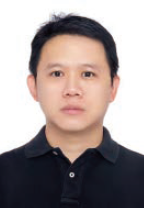Rongpei Shi1,2*
1Harbin Institute of Technology (Shenzhen), Shenzhen, 518005, China
2Institute of Materials Genome and Big Data, Shenzhen, 518005, China
EXTENDED ABSTRACT: Titanium alloys have found increasingly widespread applications in aerospace sectors. Microstructure engineering for optimal mechanical properties relies heavily on the control of the size, shape, and spatial distribution of precipitates within matrix upon processing. Variant selection (VS), namely the preference of a subset of 12 possible variants, occurs frequently at length scales ranging from a single grain, across grain boundaries (GBs), to overall polycrystalline samples, owing to a wide variety of interacting factors. In this presentation, Our efforts will be summarized in developing a fundamental understanding of VS and its influence on transformation texture development during thermomechanical processing through using integrated multi-scale modeling and advanced characterization techniques. These efforts include a systematic assessment of the applicability of all current empirical VS rules of grain boundary precipitates and the co-evolution of microstructure and transformation texture due to VS in polycrystalline samples subjected applied stress/strain.
Keywords: Titanium alloys; multi-scale integrated modeling; variant selection;
REFERENCES
[1] R. Shi, D. Wang and Y. Wang, ASM International, Vol 4E., (2016) 573-603

Rongpei Shi is a full professor at the College of Materials at Harbin Institute of Technology Shenzhen (HITsz). He received his Ph.D. degree in Materials Science and Engineering from The Ohio State University (OSU) in 2014. Before joining HITsz, he was a research associate in the Deparhnent of Materials Science and Engineering at OSU from June 2014 to June 2017, and a staff scientist in the Materials Science Division at the Lawrence Livermore National Laboratory (LLNL) from July 2017 to August 2021. His research focuses on the intersection of multiscale modeling and machine learning, and their applications in understanding composition processing-microstructure-properties linkages in advanced metallic (Ti, Ni, Co, Cu-based) alloys for structural applications, metal additive manufacturing and energy storage materials. He has published about 70 papers (19 in Acta Materialia with 9 as a first author) in peer-reviewed journals, as documented in his Google Scholar Profile. He received the best poster award at Gordon Research Conference Physical Metallurgy 2013 and was named among five finalists of Aaronson Award in the International Conference on Solid Phase Transformation in Inorganic Materials for Materials for outstanding young researcher, at Whistler, Canada on 2015, publication award in physical life and science directorate at LLNL 2021. He has been a member of the Youth Editorial Board for the Journal of Materials Informatics since 2021 and a TMS JOM advisor since 2020.